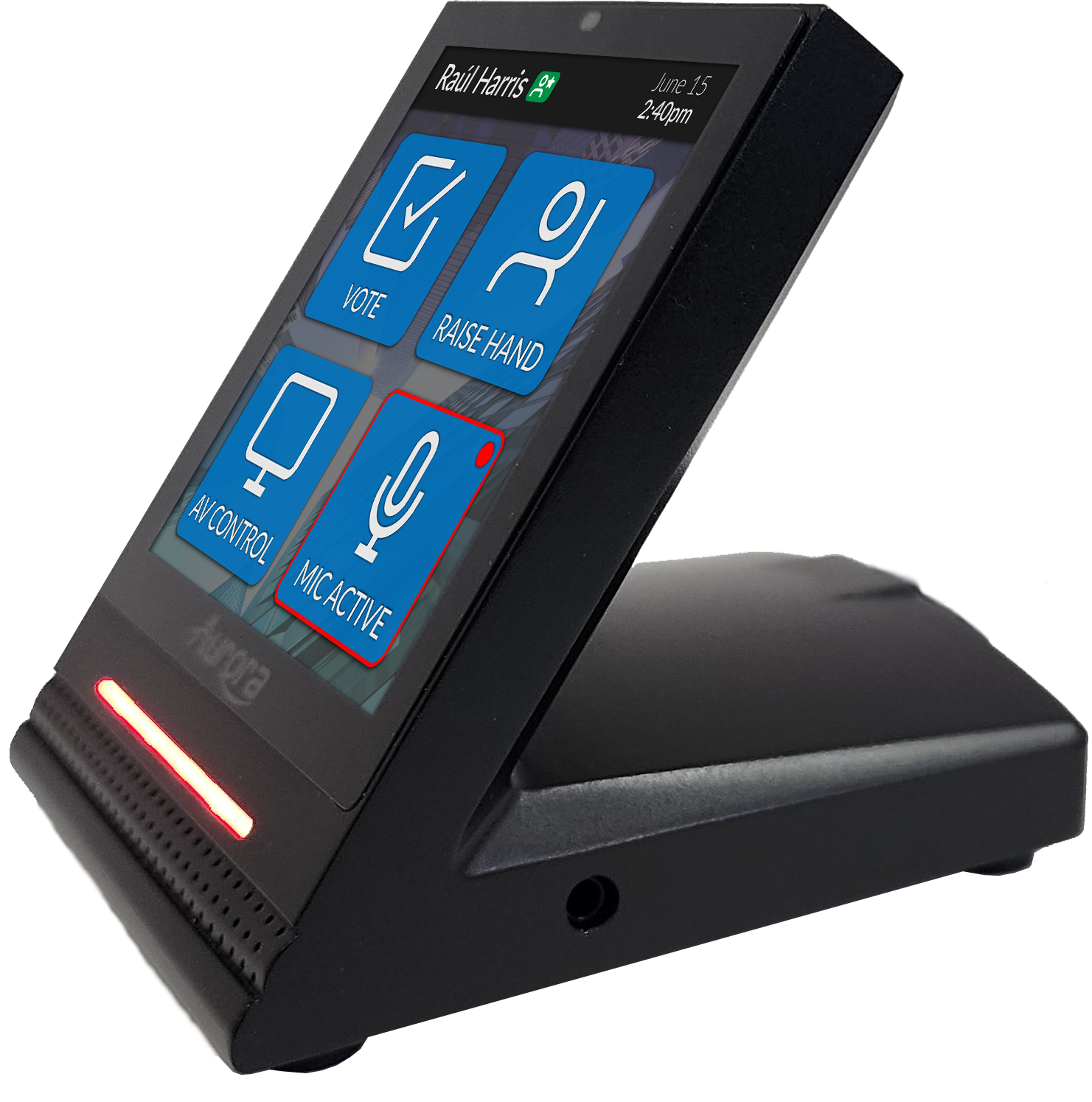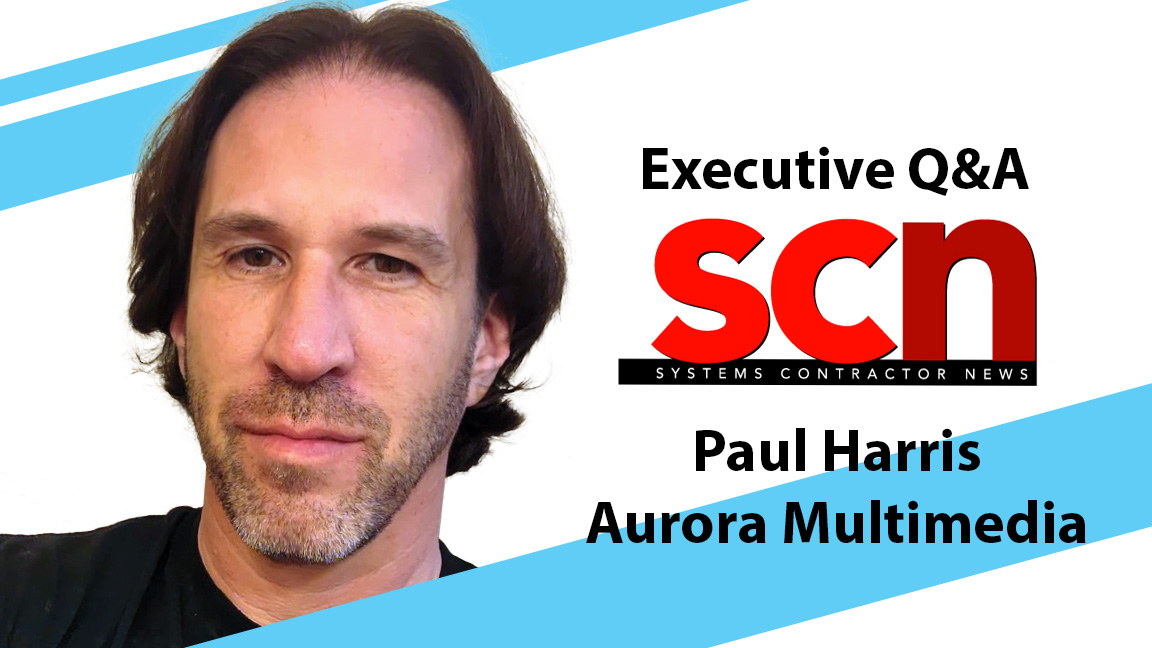SCN: How long have you been with this company, and what are your responsibilities?
Paul Harris: I have been with the company since its inception 25 years ago. My responsibilities as CEO/CTO are the growth of the company and development of new products.

SCN: What makes Aurora different from other manufacturers?
PH: We do not copy what every other manufacturer does. Everything we develop is to find a better way that solves the needs and takes it a step beyond. For us, it is looking at the topology and shaking it up; that’s why our slogan is “Changing the Topology of AV.” We also build many of our products in-house in our New Jersey headquarters, as we have our own pick-and-place electronic assembly line. Most everything you see from us is not only developed by Aurora but produced by Aurora.
SCN: How is Aurora celebrating its 25th anniversary?
PH: We threw the Aurora 25th Anniversary Bitchin’ Bacon Party during InfoComm to celebrate this milestone with all our friends. It is not just about our anniversary; it is a reflection on our success in growth, technologies, partnerships, and most importantly our employees, who make much of this possible.

SCN: What new initiatives are we likely to see from your company?
PH: We have been reinventing conference room control this year. After 30 years of everyone doing the same old thing, we're showing there is a better way. For example, currently the solution from most companies is to have a large touchpanel to control the room. Basically, the end user is paying a lot for a fancy remote control. Our new RXT-4D touch controller with beamforming Dante microphone changes all that, as everyone has their own small, 4-inch touchpanel at their seating location. Now, anyone can control the room as needed with the ability to vote, book seating assignments, indicate a raised hand, and even access audio hearing assist. That said, we will continue to radically redefine the norms of conference room technology with interesting ways of doing cameras, sound reproduction, and more.
[Executive Q&A: Serious Cable Management]
SCN: When it comes to control solutions, what are the important features customers need to consider?
PH: These days, thanks to supply chain issues, it's availability. Generally, though, control systems should be intuitive, powerful, and standards-based—like our ReAX. It must have a variety of interfaces and control boxes to accommodate the unique needs of each customer.
SCN: You’ve developed some very sophisticated touchpanel controllers, but you also offer the comparatively simple DXB-8i wall panel. Why would anyone go basic when they could have something like the RXT-4WM?
PH: Sometimes, it comes down to price. That said, some customers have very simplistic systems, and a button panel can get the job done very effectively. However, even our more sophisticated touchpanels are very affordable compared to other brands and technologies. Sometimes pricing can be deceiving, as you need to look at the total solution. In the case of our RXT-4WM, it is not just the interface but the control system unit all in one. If you break it down, it can be less and give more than the competition.
SCN: What does the industry continue to get wrong about AVoIP?
PH: The industry focuses on either a specific market segment or bandwidth versus image quality. The reality is, to have a true standard, all bandwidth must be considered from 10/100 to 10G and beyond. One protocol and baseline set of capabilities the industry now expects, such as seamless switching, less than one frame of latency, preview, videowall modes, windowing, EPG, and more. Proper security along with the standard control ports (USB, Serial, IR, CEC) is important as well. There's also simultaneous encode/decode, so one cable can deliver both directions, and the ability to do two different bandwidths at the same time for near-end and far-end operation over the same session.
[Executive Q&A: ClearOne's Change of Plans]
SCN: You’ve been vocal in the past about the various AVoIP standards. Any new developments out there that have caught your interest?
PH: There are new developments. On a selfish note, our VPX 1G technology using our Mimix codec not only delivers stunning quality at 4K60 4:4:4, but can do it with zero frames of latency (1.78ms). Additionally, I do know of things being developed that unfortunately I cannot go into detail. Rest assured there are silicon vendors working on some very exciting technologies that are only a few years away.
After 30 years of everyone doing the same old thing, we're showing there is a better way.
SCN: Aurora offers 1G and 10G solutions—how do you decide which option is the right one for your application?
PH: We listen to the customer's needs and budget. 1G typically is less expensive but can handle most applications with excellent quality and no latency. 10G is best for broadcast, medical, esports, and large LED walls.
SCN: What’s next for the Pro AV industry?
PH: AV-over-IP will continue to progress in the fight for standardization and capability. You will the SDVoE Alliance, IPMX, Dante, and others try to win the standards war. AI will continue to play more of a role in our industry in a variety of ways—for example, camera tracking, audio filtering, video clarity, and much more. Display technology will continue to advance to find the replacement for the projector that can deliver the size without the cost. For control, Aurora will be continuing with our ReAX technology and trying to ultimately make it an industry standard, as it is based on Javascript and HTML.

